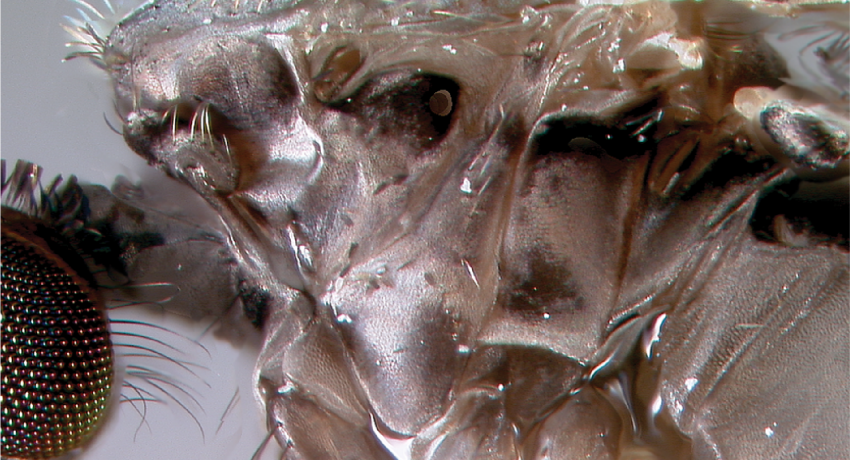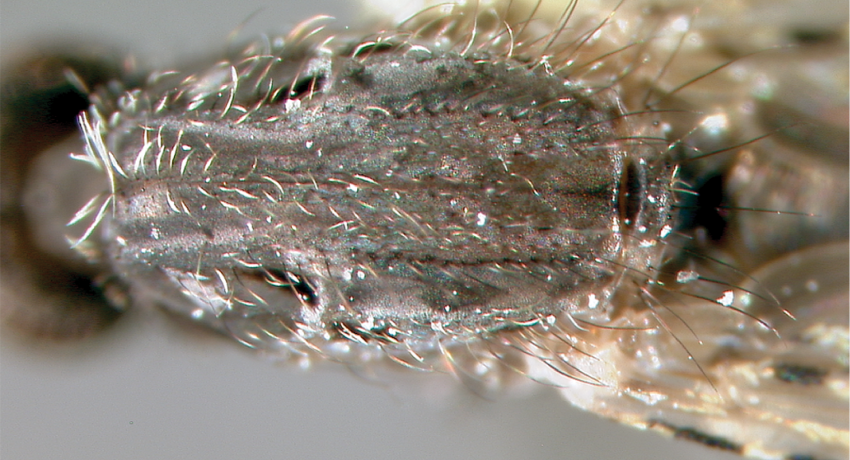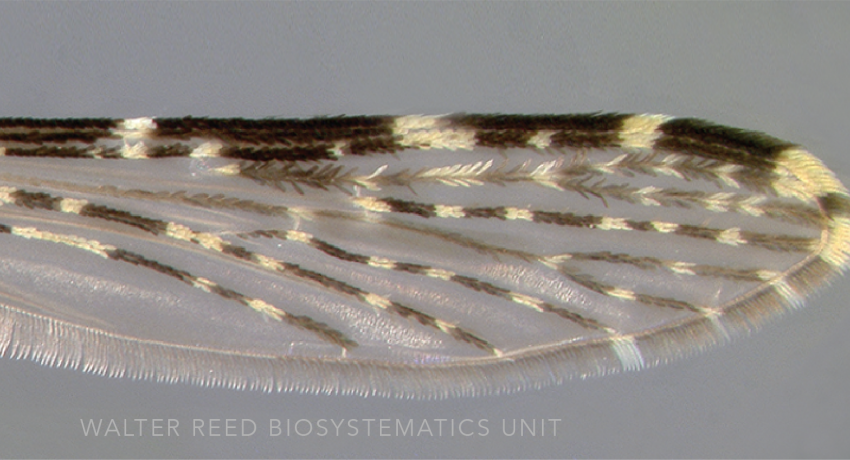INDO-ORIENTAL & PALEARCTIC REGIONS
View Anopheles dirus complex taxonomic timeline
Etymology: not stated [cruel, fearful, horrible (L)]
Elucidation of component members of the DIrus Complex took many years, and extensive crossing, cytogenetics, allozyme and molecular studies. Members of the An. dirus s.l. are reported from eastern India, Bangladesh, Myanmar and down throughout the mainland of Southeast Asia into Malaysia. The complex is most diverse in Myanmar and Thailand, where many species can be found in sympatry. Currently there are seven formally named species—Anopheles dirus s.s. (formerly An. dirus A), An. cracens Sallum & Peyton (formerly An. dirus B), An. scanloni Sallum & Peyton (formerly An. dirus C), An. baimaii Sallum & Peyton (formerly An. dirus D), An. elegans (James) (formerly An. dirus E) and An. nemophilous Peyton & Ramalingam (formerly An. dirus F), An. takasagoensis Morishita—and another recognized form “aff. takasagoensis”. Anopheles dirus s.s. is the most widespread of all the component taxa.
Type locality: Ban Bu Phram, Prachin Buri, Thailand
Type depository: U.S. National Museum, Washington, D.C., United States (USNM)
DIAGNOSTIC CHARACTERS (Click photos to view; mouse over and click large photo to zoom in.)
ADULT (illustrated): Head: Proboscis slightly longer than forefemur, apex not pale; palpus with ≥4 pale bands. Thorax: Antepronotal scales present; presector dark spot of vein R with 1-4 pale interruptions, most frequently 2. Wing: Bright shiny white scales on presector pale and sector pale spots, nearly as pure white scales on the halter, distinctly contrasting with yellowish scales of the subcostal pale and preapical pale spots; accessory sector pale spot always absent on vein C; vein 1A at level of presector dark spot, with pale spot c. equal to others on that vein. Legs: Apex of Ti-III and base of Ta-III1 with large white band; Ti-III apical pale band without dark interruption; Ta-III4 always with conspicuous basal pale patch on dorsal surface. Abdomen: Sternum VI (VI-S) without posteromedian patch of dark scales.
LARVA (not illustrated): Head: Seta 3-C single; seta 4-C usually not reaching base of 2-C; seta 5-C distinctly longer than antenna. Thorax: Seta 1-P basal sclerotized tubercle with prominent tooth. Abdominal segments: Seta 1-II weakly-developed palmate; setae 1-III–VI well-developed palmate, with narrow laneolate or filiform leaflets. Terminal segments: Seta 1-X inserted on or at edge of saddle, never in marginal notch.
TAXONOMIC KEYS
Darsie & Pradhan 1990
Rattanarithikul et al. 2006b
Becker et al. 2010
![]()
WRBU - Anopheles - Neomyzomyia Series - Oriental Region - Larva
![]()
WRBU - Anopheles - Neomyzomyia Series - Indomalayan Region - Adult
![]()
WRBU - Anopheles - Neomyzomyia Series - Indomalayan Region - Larva
![]()
WRBU - Genera - Global - Adult
![]()
WRBU - Genera - Global - Larva
![]()
WRBU - Anopheles Subgenera and Series - Indomalaya - Adult
![]()
WRBU - Anopheles Subgenera and Series - Indomalaya - Larva
![]()
WRBU - Anopheles Subgenera and Series - Oriental - Adult
![]()
WRBU - Anopheles Subgenera and Series - Oriental - Larva
Exemplar DNA sequences
An. dirus COI: DQ897943–46
An. baimaii COI: DQ897952–54;
An. cracens COI: DQ897947–48;
An. elegans COI: EU259300, DQ897957–58;
An. nemophilous COI: DQ897959–61;
An. scanloni COI: AM180766–874;
An. takasagoensis COI: DQ897962–64;
An. aff. takasagoensis COI: AB518534-38.
BIONOMICS
Immatures
Anopheles dirus s.l. immatures occupy shallow (often temporal) shaded freshwater sites, and species densities increase exponentially in the rainy season. Typical habitats include puddles, ground pools, animal wallows, large animal footprints and wheel ruts. Recently An. baimaii was reported breeding in wells in Myanmar, indicating a worrying encroachment of this effective malaria species into human settlements.
Adults
Anopheles dirus s.l. are all forest-dependent species, occupying mountainous areas and foothills across their range, as well as disturbed forest habitats—such as rubber plantations, logging areas, agricultural settings, or villages on the forest fringe. Anopheles dirus s.s., An. baimaii, and An. scanloni are all highly anthropophilic, feeding both indoors and out, and are important malaria vectors. Anopheles nemophilous and An. takasagoensis are wholly zoophilic, and the biting preferences of An. cracens and An. elegans are yet to be confirmed.
DISTRIBUTION NOTES
Cambodia, India, Indonesia, Laos, Malaysia, Myanmar, Nepal, People's Republic of China, Taiwan, Thailand, Vietnam.

WRBU VECTOR HAZARD REPORTS
View other WRBU Vector Hazard Reports
Available GIS Models
IMPORTANT REFERENCES (full citations below)
Peyton & Harrison 1979: 41 (M, F*, P*, L*)
Ahmed 1987 (distribution; Bangladesh)
Baimai et al. 1987 (dirus sensu lato)
Baimai et al. 1988a: (dirus sensu lato)
Darsie & Pradhan 1990 (F, L; taxonomy, keys, bionomics, distribution; Nepal)
Oo et al. 2004 (distribution; Myanmar)
Sallum et al. 2005a: 29 (M, F*, P*, L*; distribution)
Sallum et al. 2005b (taxonomy; sensu lato)
Rattanarithikul et al. 2006b (F*, L*; bionomics, distribution, keys)
Sallum et al. 2007: 30 (phylogeny)
Becker et al. 2010: 342 (F*, L*; key, taxonomy, distribution, bionomics)
Sinka et al. 2011: 89 (bionomics review, distribution, niche model; Dirus Complex)
Dev & Sharma 2013 (taxonomy, bionomics; Dirus Complex.)
CURRENT SYNONYMS
None
CITED REFERENCES
Ahmed, T.U. (1987). Checklist of the mosquitoes of Bangladesh. Mosquito Systematics, 19(3), 187–200.
Baimai, V., Andre, R. G., Harrison, B.A., Kijchalao, U., & Panthusiri, L. (1987). Crossing and chromosomal evidence for two additional sibling species within the taxon Anopheles dirus Peyton and Harrison (Diptera: Culicidae) in Thailand. Proceedings of the Entomological Society of Washington, 89(1), 157–166.
Baimai, V., Harbach, R.E., & Kijchalao, U. (1988a). Cytogenetic evidence for a fifth species within the taxon Anopheles dirus in Thailand. Journal of the American Mosquito Control Association, 4(3), 333–338.
Becker, N., Petrić, D., Zgomba, M., Boase, C., Madon, M., Dahl, C., & Kaiser, A. (2010). Mosquitoes and their control (Second ed.). Berlin Heidelberg: Springer-Verlag.
Darsie, R.F., Jr., & Pradhan, S.P. (1990). The mosquitoes of Nepal: Their identification, distribution and biology. Mosquito Systematics, 22(2), 69–130.
Dev, V., & Sharma, V.P. (2013). The dominant mosquito vectors of human malaria in India. In S. Manguin (Ed.), Anopheles mosquitoes - New insights into malaria vectors (pp. 239–271). Janeza Trdine 9, 51000 Rijeka, Croatia: InTech.
Oo, T.T., Storch, V., & Becker, N. (2004). Review of the Anopheles mosquitoes of Myanmar. Journal of Vector Ecology, 29(1), 21–40.
Peyton, E., & Harrison, B.A. (1979). Anopheles (Cellia) dirus, a new species of the Leucosphyrus Group from Thailand (Diptera: Culicidae). Mosquito Systematics, 11(1), 40–52.
Rattanarithikul, R., Harrison, B.A., Harbach, R.E., Panthusiri, P., & Coleman, R.E. (2006b). Illustrated keys to the mosquitoes of Thailand. IV. Anopheles. Southeast Asian Journal of Tropical Medicine and Public Health, 128(Supplement 2), 2.
Sallum, M. A. M., Foster, P.G., Li, C., Sithiprasasna, R., & Wilkerson, R.C. (2007). Phylogeny of the Leucosphyrus Group of Anopheles (Cellia) (Diptera: Culicidae) based on mitochondrial gene sequences. Annals of the Entomological Society of America, 100(1), 27–35.
Sallum, M. A. M., Peyton, E. L., & Wilkerson, R. C. (2005a). Six new species of the Anopheles leucosphyrus group, reinterpretation of An. elegans and vector implications. Medical and Veterinary Entomology, 19, 158–199.
Sallum, M. A. M., Peyton, E.L., Harrison, B.A., & Wilkerson, R.C. (2005b). Revision of the Leucosphyrus Group of Anopheles (Cellia) (Diptera: Culicidae). Revista Brasileira de Entomología, 49(Suppl. 1), 1–152.
Sinka, M.E., Bangs, M.J., Manguin, S., Chareonviriyaphap, T., Patil, A.P., Temperley, W.H., ... Hay, S.I. (2011). The dominant Anopheles vectors of human malaria in the Asia-Pacific region: Occurrence data, distribution maps and bionomic précis. Parasites & Vectors, 4(1), 89.
CITE THIS PAGE
Walter Reed Biosystematics Unit (Year). Anopheles dirus species page. Walter Reed Biosystematics Unit Website, http://wrbu.si.edu/vectorspecies/mosquitoes/dirus, accessed on [date (e.g. 03 February 2020) when you last viewed the site].










































































































































































